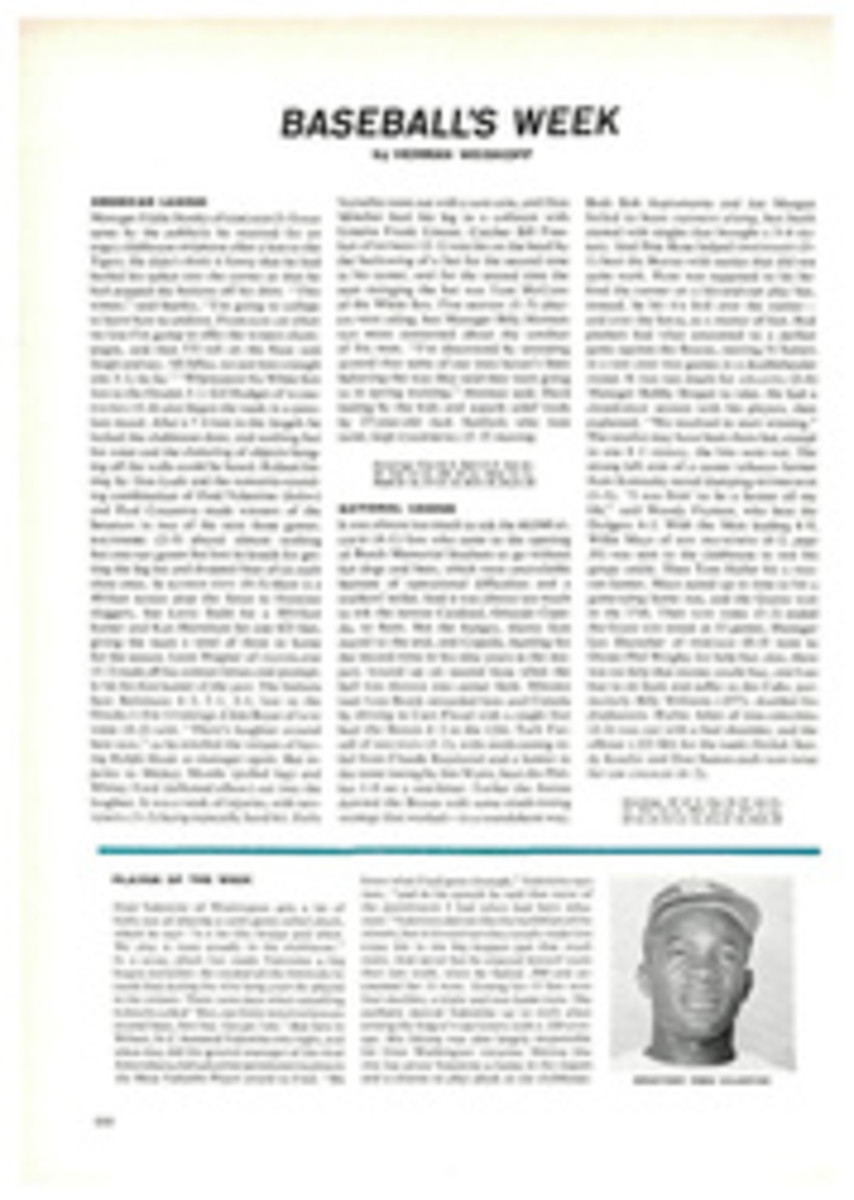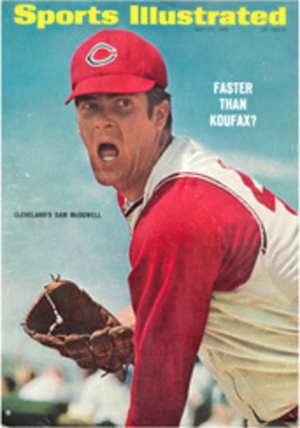
A Riva motorboat is a status symbol both to its owner and to its builder
Prince Rainier of Monaco has a Riva boat, and so does Gamal Abdel Nasser. President Bourguiba of Tunisia has one, and so do the Sheiks of Kuwait and Qatar, the Shah of Iran and Brigitte Bardot. The Riva boat is, of course, a status symbol—and an expensive one ($9,250 to $24,400) at that. But it also is a practical runabout boat, a seagoing Rolls-Royce.
The boat is named for its designer and manufacturer, Carlo Riva, a compactly built, graying Italian with a near-perpetual almost-shy smile and a set of the whitest teeth since Sabu. Riva builds his boats in a highly modern and efficient shipyard in Sarnico, a tranquil fishing village on the shores of Lago d'Iseo in the extreme north of Italy. Riva likes the sound of the prices he pays and the prices he charges: he rolls them on his tongue like a winetaster.
"My fuel tanks," he says, "are made of nonpitting stainless steel soldered with silver—five times more expensive than the standard iron tank. My propeller shafts are made of Monel—four times more expensive than bronze. My instruments are all made in Germany—twice as expensive as anybody else's."
If that doesn't hold you, he adds: "I import my stainless steel from Sweden, my windshield glass from Belgium, my wood screws from England and my engines and antifouling paint from the United States. I use Italian textiles, not because I'm patriotic but because, like my other materials, they are the best I have been able to find."
Riva's current annual output is only 350 runabouts—a modest total, yet sufficient to keep more than 300 skilled craftsmen and technicians occupied the year round. Production methods are in the American style. From start to finish, each single-engine Riva runabout moves along the line with precision through nine basic positions at an average of two days per position—or a total of 18 days per boat. The time schedule for a twin-engine Riva is exactly double—four days per position, or a total of 36 days. It requires the skills of some 24 craftsmen on the Riva production line—from one to five per position—to construct a boat ready for testing, final varnishing and finishing.
At the eighth position the engine is installed and all wiring connected. At the ninth position, after having received four sprayed coats of varnish, the boat is put into the water. Each runabout is water-tested no less than three times by a team of technicians, no test lasting less than 20 hours.
The first water test is for controlling the action of the engine, checking the number of rpms, looking for leaks, seeing if the rudder is balanced. After the test is completed and all necessary adjustments made, the boat is treated to a second four coats of varnish, this time brushed on and hand-rubbed.
The second water test is for checking vibrations and the operation of lamps, navigation lights, fuel gauge, speedometer and other instruments. Afterward, the boat is given a ninth and last coat of varnish, and all finishing touches are provided: the installation of chrome trimmings, cushions and the like. The third and final water test is completed just prior to delivery to the customer.
The Riva industry was begun in 1860 at Sarnico by Ernesto Riva, grandfather of Carlo. The "shipyard" at that time consisted of a lakefront house, since renovated and today operated as a tourist hotel. The first watercraft produced by Ernesto and his crew of two were rowboats for ferrying people and goods across the lake.
After the founder's death the enterprise was taken over by his son Serafino, whose prime preoccupation was sailboats and, when engines came into use, speedboats. Serafino's son Carlo entered the family business at age 10 and moved upward through a succession of tasks ranging from the most menial to the most exacting.
In time he became chief designer and, for what he terms too long a period, catered to his father's—and the sporting public's—passion for faster and faster boats. In the late 1930s Riva speedboats were continually making international sports headlines.
In 1949 his father retired and left him in charge of the company—seven workers and a yearly production of five boats. With the title of sole proprietor also came that of sole worrier. He came to realize that headlines were heady and recognition was sweet—but you couldn't eat them. The public loved to see and read about superfast boats, but it wouldn't buy them. The reason was obvious: they were delicate, noisy, hard to handle and costly to maintain.
Carlo decided to turn to more practical and remunerative runabouts. Italian engine and parts makers, according to his experience, simply were not geared for or inclined toward anything remotely resembling quantity production. They were customized to the extreme. Riva, on the other hand, was convinced that to achieve the international acceptance he sought he must, without sacrificing quality, build his operation on a foundation of universally serviceable standardized parts.
One of his first decisions was to equip his boats exclusively with the proven, widely accepted American engines he had for so long admired. He established close connections with Chrysler's marine-engine division, whose 290-hp M413D Golden Lion he uses in his higher-powered craft. He also dealt with Chris-Craft, whose 185-hp "238" V-8 engine he uses extensively and for whom he is today exclusive engine and parts distributor in Italy.
Last year he purchased some 100 marine engines from Chrysler and 500 from Chris-Craft. (In spring, which is high season for him, he maintains 400 to 500 engines in stock; in low season, beginning the middle of August, this figure drops to about 100.) Riva currently also boasts the largest and most diversified Stock of spare marine parts in the world, minimally valued at $300,000.
Once the engines arrive at the Riva shipyard each is completely disassembled and reassembled with key Riva-specified replacement parts. For example, cast-iron shaft couplings are removed and replaced with rust-resistant nickel-bronze couplings of Riva's own design. The reason for this, he explains, is that after about two seasons' use in salt water the cast-iron part would be in such a fused state that it could not be disassembled. This year Crusader Marine in Warren, Mich. will start turning out engines built to Riva's explicit specifications. Nothing in Riva runabout is made of iron or aluminum; almost every metal part is of copper, bronze or stainless steel—down to the springs, screws and bolts.
All Riva runabouts are constructed largely of choice African mahogany. Interior woodwork is of Honduras mahogany, which is almost as expensive. So-called Philippine mahogany, used by some boat-makers to construct an entire craft, is used by Riva only for seat frames. Only about 20% of the wood that arrives at the shipyard is approved for use. The rest is directed to a Riva factory in Monza that produces plywood for less exacting boatbuilders. The wood that passes Riva's rigid inspection is washed clean of acid impurities, bathed in a preservative, and then stored away to age for no less than three years.
The ribs of a Riva hull are extremely close-spaced: from eight to a maximum of 10 inches apart. The sides are of single-length triple-planked mahogany from bow to stern, premolded to avoid tension in construction. There are no vertical joints, and the grain of the wood is so perfectly matched that the seams are all but invisible. This three-layer planking is processed and laminated to be completely waterproof. For his bottoms Riva uses a nine-layer marine plywood often referred to as "armored paneling."
He has franchised 27 Riva service stations—21 in Italy, four on the French Riviera (of which the one at Monte Carlo has already attained the status of a prominent landmark) and one each in Switzerland and Holland—equipped with hangars for storage and an extensive stock of spare pans. Altogether they provide employment for more than 450 workmen and technicians, all of whom were trained and checked out at Sarnico.
And Rex Harrison has one and Stewart Granger has one and....

